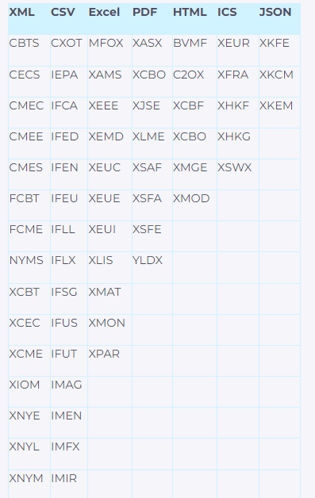Here’s Why Manual Derivatives Limit Monitoring Is Asking For Trouble
Accurate monitoring of derivatives is reliant on a multitude of data points, each just as important as the last. Data sits at the heart of the issue and the challenges are many. The dataset is big, isn’t static, changes by country, exchange, isn’t that easy to source, collate or build into sets and changes all the time. It’s not just the old adage of bad data in, bad data out, making good datasets that are able to be easily interrogated takes time and requires a complete understanding of the rules to do well.
The nuances associated with derivatives limit monitoring means any process that requires manual intervention to maintain, takes an inordinate amount of effort to keep working effectively. As teams grow and strategies incorporate more contracts and exchanges, there is a tantamount increase in the risk of breaching a threshold.
Sourcing Exchange Limit Data
The most difficult part of monitoring derivatives limits is data. It takes mountains of it to holistically view positions against the appropriate limits in the right time frame. Exchange limit data is difficult to access, can’t be done from a single source, and requires a sizeable amount of knowledge and technical proficiency to clean and use in compliance departments.
There are some vendors, the main one being FIA Tech, that aggregate and licence the data, but they won't do so to individual management companies. Instead, they will only licence the information to specific vendors that meet their operating standards.
Limits are constantly being updated, too, presenting a problem for today’s monitoring even if yesterday was problem-free. One day’s solution simply might not even hold true for the next day.
Navigating Trading Calendars
Trading calendar information is another component of derivatives limit monitoring that serves as a moving target, especially when considering the implication of ‘Spot Month’ limits.
The spot month position limit rule puts a limit on the amount of contracts an investor can hold in the month in which the contracts expire, which can be anywhere from 5-10 trading days before the end of the month. There is no standard, and each month the settlement date can change. Exchanges don’t publish the actual date when a contract enters the spot month period, but instead release rules which explain when a contract enters its spot period. This means compliance officers are forced to calculate the spot date manually in order to accurately monitor Spot Month limits.
Additionally, there is no uniformity between exchanges in terms of how their trading calendar data is presented, and comes in a variety of formats, as seen below:

Seamlessly integrating various formats into your own data specifications, and quickly, is the only way to avoid hurdles in accurate monitoring of derivatives contracts. It’s a tall order, and trading calendars remain an evergreen member of the list of problems facing compliance teams.
Diminishing Limits
Similar to spot month limits, diminishing limits, or subsequent spot-month limits, present problems for compliance departments managing derivative limits with a manual system. Exchanges can, and often do, ‘implement a schedule of decreasing position limits ranging from the point in time when a contract becomes a spot month contract until maturity’.
This means that exchanges can impose multiple position limits throughout the spot month, and therefore, compliance professionals must monitor spot-month limits daily even if there is no trading activity.
Are you on top of all this?
Not only is data in regulatory compliance monitoring hard to come by, but it presents problems for even the most seasoned teams because of where it sits and how it’s used in certain practices of derivatives monitoring.
Having access to the exchange limit data you need is great, but you’ll still have to process and clean it in order to make it usable. You might be comfortable with XML and CSV, but there are still several other trading calendar formats necessary to incorporate into internal systems to monitor derivatives accurately. Not actively trading? Great, but you’ll still have to monitor daily to stay compliant thanks to diminishing limits.
Manual systems and review processes aren’t designed to shoulder the workload that error-free derivatives contract monitoring requires, and that time and effort gets transferred to teams and traders to handle manually as a result.
The simple answer is to embrace automation. You want more than just the technology though, you want that system to come with some hard-to-get, difficult-to-get, data. You want them to stay on top of that data challenge in all its shapes and sizes. Compliance can be easier, less cumbersome. Even in niche areas the age of automation is here.


